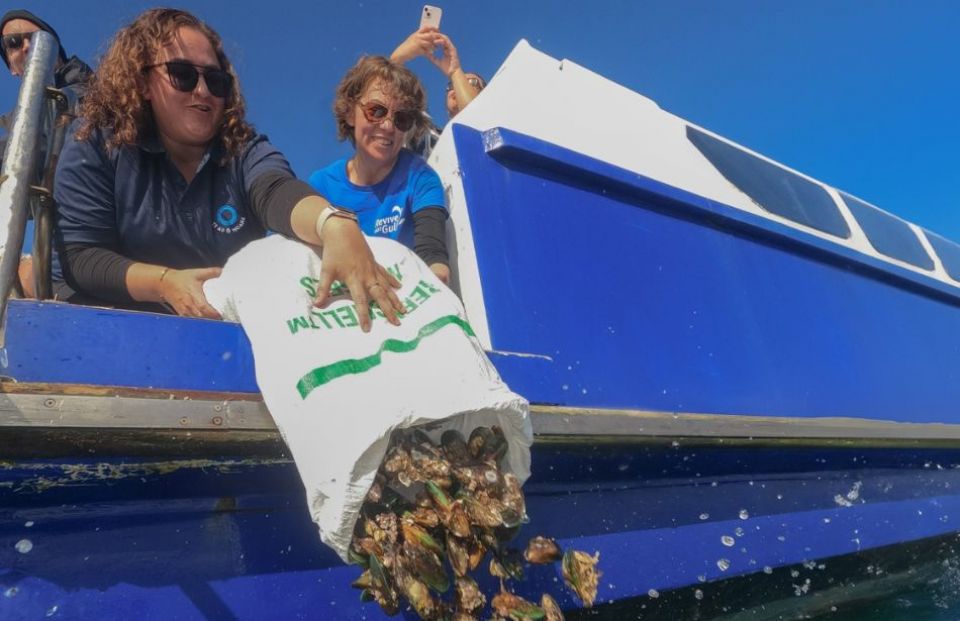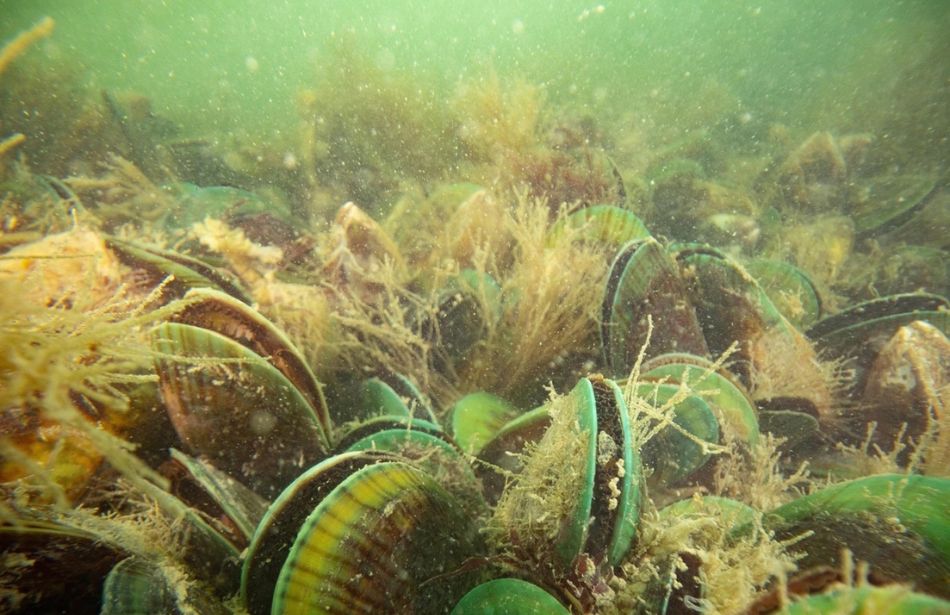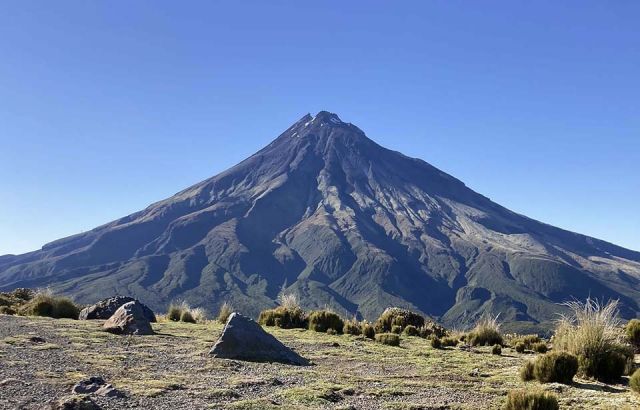Kūtai restoration in the gulf persists despite some tough results
• May 30, 2025

Revive Our Gulf's Katina Conomos (right) and Kaimahi Helayna Tane, from Ngāti Manuhiri Settlement Trust, put kutai in the Hauraki Gulf. Photo: Shaun Lee
Efforts to revive the kūtai population in the Hauraki Gulf have hit a snag, but morale among those restoring the mussel beds has remained high.
Kūtai density has continued to decline despite the efforts of Revive Our Gulf to create a shellhash platform for the kūtai to thrive on in Ōkahu Bay.
Revive our Gulf programme director Katina Conomos says the team still has high hopes.
“Whilst that wasn’t easy data to receive, none of us were discouraged by it. It’s always going to be an experiment. For us, there is more inquiry [ahead].
“If things were more straightforward and less complex, the solutions would be simpler, but they are not simple solutions to these complex problems.
"So, if anything, it just reinforces the need for our work to keep going,” Conomos said.
She said there were still a lot of improvements being made with each experiment.
“We have put live mussels, taken from the mussel farms, back into the ocean. And that activity alone creates a structure that wasn’t there before,” she said.
“We’re immediately boosting the environment with structure and that very activity creates habitat for juvenile fish or seaweeds.”

Mussels 24 hours after placement at Ōkahu Bay. Photo: Shaun Lee
Despite the challenges with mussel density, the project had helped "development of a diverse community of organisms living on the seafloor.”
“I’m absolutely proud of the work and of the team, and particularly the partnerships and relationships we have forged. And in the fact that we have seen such enduring commitment in spite of the discouraging nature of some of the results we are getting,” Conomos said.
She noted the experiments, while themselves seeming complex with barges and tonnes of kūtai, were part of a broader goal to restore around 1000sq km of shellfish beds in the Hauraki Gulf.
A new marine protection law, the Hauraki Gulf / Tīkapa Moana Marine Protection Bill, coming into effect in coming weeks and will increase protected areas from just over 6 per cent of the Hauraki Gulf, to about 18 per cent.. Some commercial fishing will be allowed.
The protection bill doesn’t directly support Revive Our Gulf’s efforts; however she said it was still a positive for the experimental research.
"The number one thing we need to be doing for the gulf is protecting what’s there now.”

Whakatairanga ka tika, whakamaua ngaa mita
AISHA CAMPBELL (NGĀTI RUANUI, NGĀ RAURU, NGĀ RUAHINE, TE ATIAWA, TARANAKI) • October 28, 2025

Supporters hope new council will save Western Springs Speedway
Savannah Lendich Jonkers • October 8, 2025


Whakatairanga ka tika, whakamaua ngaa mita
AISHA CAMPBELL (NGĀTI RUANUI, NGĀ RAURU, NGĀ RUAHINE, TE ATIAWA, TARANAKI) • October 28, 2025

Supporters hope new council will save Western Springs Speedway
Savannah Lendich Jonkers • October 8, 2025
